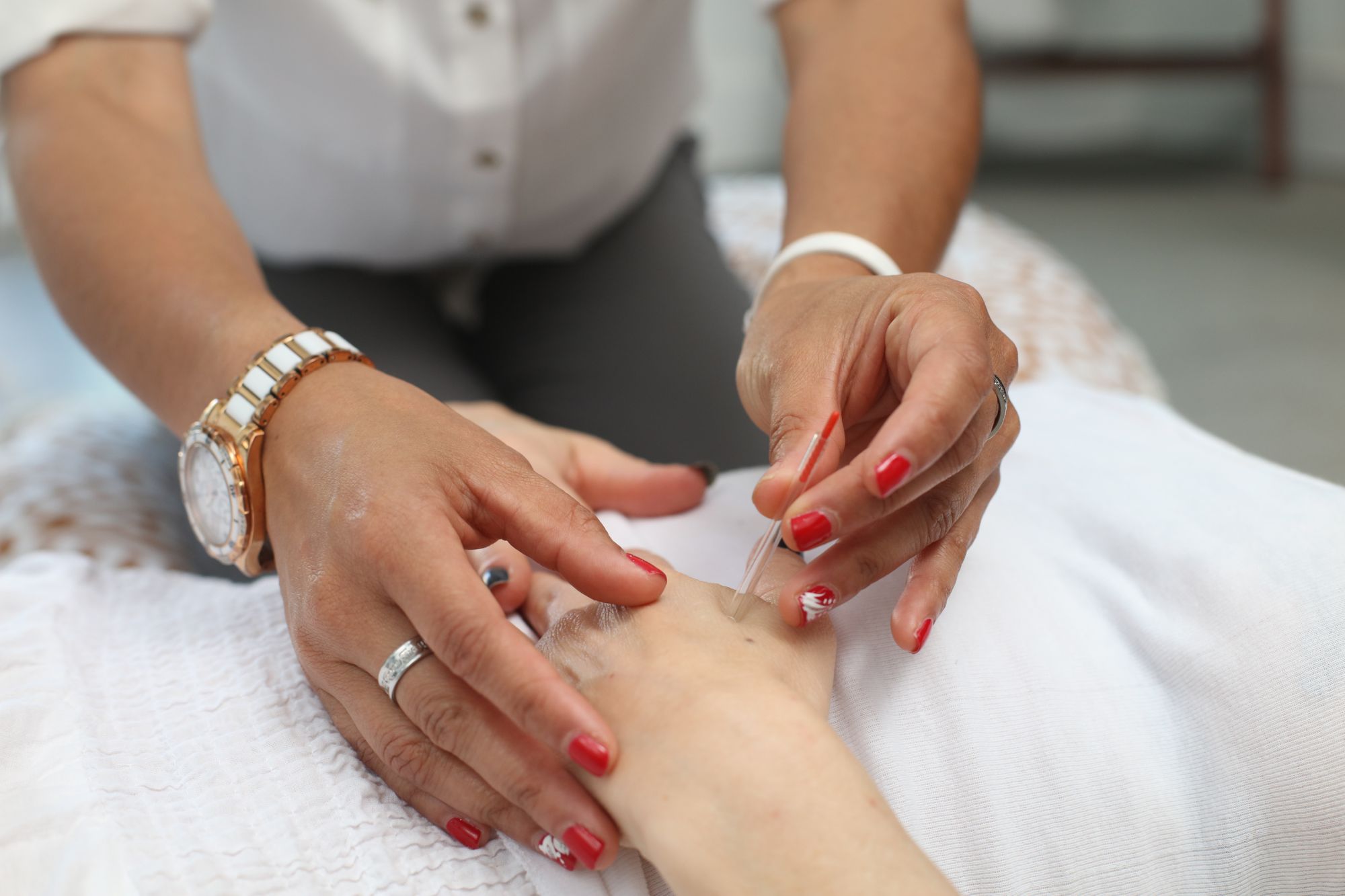No matter where you land in the debate on the efficacy of alternative medicine (pseudoscience, ancient wisdom, bunk, godsend) there’s no denying the increased popularity of complementary and alternative medicine (CAM) in the United States.
"The global complementary and alternative medicine market size was projected at USD 69.2 billion in 2019"
- Grandview Research
So, how must the healthcare industry evolve its understanding of CAM and its place in the modern conception of wellness in order to keep up with developing consumer expectations?
Landscape
All right, full disclosure time. I am a big believer in some forms of alternative medicine. I’ve suffered from asthma and eczema and had weird allergic inflammatory episodes my whole life. A shout out to the 24+ dermatologists, allergists, pulmonary specialists, and generalists i’ve seen through my life, but as competent and well-meaning as they are, they just haven’t been able to steroid away all my stuff. So I’ve sought out the help of naturopaths, Chinese medicine practitioners, acupuncturists and more. Turns out I’m not alone.
"According to a government survey, 36% of U.S. adults ages 18 years and older use some form of complementary and alternative medicine (CAM). This number goes up significantly if prayer is included in the definition of alternative medicine.... CAM approaches were most often used to treat back pain or problems, colds, neck pain or problems, joint pain or stiffness, and anxiety or depression, according to the survey... However, only about 12% of adults sought care from a licensed CAM practitioner, suggesting that most people who use CAM do so without consulting a practitioner."
- National Health Interview Survey outlined by verywell health.com
Some popular CAM therapies include acupuncture, botanical medicine (including chinese herbal remedies, ayurvedic medicine, and other naturopathic and homeopathic remedies [including CBD and Kratom products]), mind and body healing (including yoga, meditation, energy healing, chakra healing, hypnotherapy and kinesiology) and magnetic intervention.

Healthcare has already started to meet this trend with shifting offerings and alignments of its own. You can’t watch a commercial for any healthcare brand from the last 15 years without seeing someone break into warrior pose or a sun salutation. Yoga has become a symbol of preventative and value based care across health networks, pharmacy and insurance campaigns. Also, health insurance companies have increasingly been covering alternative treatments like acupuncture and chiropractors in the last decade. This year, 2020 marked the first year Medicare covers acupuncture.
“HHS Secretary Alex Azar said offering alternative treatments for pain management 'is a key piece of the Trump administration's strategy for defeating our country's opioid crisis.' According to CMS, up to 66% of patients with chronic lower back pain are prescribed opioids.” - Advisory Board
Drivers
Everyone knows someone suffering from some auto-immune inflammatory condition or chronic pain that doesn’t have a distinct known cause (and if you don’t, congratulations on living in the world’s healthiest bubble or being under 18 years old). As chronic disease stemming from lifestyle of the western world increases so does the search for what can bring balance or relief. Our sedentary habits, processed high-sugar high-fat food, and high-stress behavior don’t seem to be waning and so our search for wellness is somewhat about off-setting these as opposed to eliminating them.

The opioid crisis is scary. People are getting the picture that going to the doctor for magic pills that fix all your problems isn't all it's cracked up to be. There is a trend of people looking beyond pharmaceuticals and western medicine to establish wellness as well as treat pain and conditions ranging from the everyday to more serious. Consumerism in this vein is driving the market.
Alternative medicine is expected to become more mainstream in the coming years, especially in developed countries. This can be attributed to a new acceptance displayed by physicians and doctors in U.S. toward alternative philosophies and treatments that were conventionally excluded from mainstream medicine. -Grandview Research
Future of Alternative Medicine Predictions
Imagine a world where acupuncture and ayurvedic medicine clinics line the boulevards like gelato shops. Oh, you already live in California? Well strap in as we are transported forward in time. Walk with me down Main Street U.S.A of the future (bring your sunscreen, the climate change is brutal). Look, there’s a Reiki /Light energy clinic between the V.R. gym and the coffee shop. Let’s take a peek inside. Patients are able to measure and quantify results (understand the changes and benefits in the body) of their energy healing, and there’s also a functional medicine doctor on hand and a juice bar, too.
Let’s head into the large chain grocery outlet of the future. People are able to buy what used to be niche herbs and compounds anywhere as easily as they once bought aspirin. These botanical cures are mass produced, have cultivated brands and are advertised on a large scale. In 2017 Garden of Life, a whole food supplements and vitamins brand, was bought by Nestle. In the future we can see Kraft, Coca-Cola, Anheuser-Busch and more all have their natural foods, supplements and health-based brands. Some consumers do prefer to get their botanicals in their raw plant form from a known source, and that’s available here too right next to the make-your-own milk-alternative station.
Consumers get guidance through their chinese, ayurvedic or other botanical medicine treatment and the process is a very transparent one. People have tools to help them understand each ingredients' biological function and how they might work in concert with other herbs or food. The produce guy can actually answer some of your health and wellness questions, too.
And see those high school students outside that look like they are up to no good? They are up to no good, BUT some of them are considering acupuncture as a future career as there are now many enduring reputable places to get trained in America. Most of them have grown up with acupuncture being a commonplace recommendation for even low level issues like PMS symptoms and to speed healing from strains and sprains. All of them have received CAM treatments in concert with western medicine since childhood from their regular doctor.

Follow me into that office building. Wow, I didn’t think workplace fashion could get anymore athleisure. Employee benefit managers have become far more invested in employees health and have in effect become partners with health insurance companies. Their goal: keep their employees well. This workplace offers nutrition and healthy lifestyle counseling, onsite massages, pilates and yoga classes, smoking cessation programs, and they even get coverage for baseline wellness practices and many more CAM options if they are sick.
Healthcare Opportunities
As research and trials of CAM treatments increase and consumers become wary of a “limited” western medicine approach, all fields of healthcare will need to consider how Complementary and Alternative medicine will coincide with their current offerings.
Healthcare Networks/Providers
Holistic will be the magic word you can offer your patients. Ensuring your providers have wide understanding across western medicine and potential CAM treatments will be a key way to differentiate your services and meet patients needs and expectations. Working in tandem with CAM practitioners, making CAM recommendations or having CAM trained MD’s onsite will be very attractive to potential patients. Don’t forget the behavioral health and physical therapy service lines. Offering therapies like havening and hypnotherapy or body work like myofascial release and rolfing not only can potentially help outcomes but shows consumers you are in the business of understanding and practicing what works for a wide range of people and starts to add into the “personalization” value prop I know you’re all championing. Provider and research institutions can partner with Health insurance companies to provide valuable data on the efficacy of CAM treatments.
Be the providers that can assess symptoms and help set baseline measurements (so effectiveness of CAM treatments can be followed). Make this a digital platform that provides the ability for patients to quantify and track progress beyond just “feeling better.” And on the technology front, provide digital tools to understand pharmaceutical and herbal interactions
Health Insurance
Well, you don’t want to be the only insurance plan left that doesn’t cover a range of CAM treatments. That’s a surefire way to position yourself as stolid, staid and “old thinking.”. As consumers get savvier and understand their options for health and wellness aren’t limited to a doctor’s office, this CAM coverage will become competitive differentiation. And if you’re going to cover CAM, you’re going to want to guide the choices people make. Give your customers resources and tools that provide guidance on what courses of treatment might be helpful with any current condition. Provide platforms to make CAM practitioner recommendations, or at least provide ways to find doctors with CAM understanding
Medical Devices and Technology Products
Give the people answers to their questions. Their questions are invariably “Is this working?” “How does this work?” “What might work for X?”. You have the opportunity to make all types of CAM treatments transparent.
Provide platforms that translate herbal remedies (for all ayurvedic, homeopathic, chinese common botanicals) into their biological result (i.e. turmeric helps with conditions a, b, c by creating specific anti-inflammatory elements in the blood)
Provide products that can measure fluctuations or quantify energy work
Create platforms that connect people to ideal CAM treatments for their desired benefits
You’ll also have the opportunity to create devices for home treatment that are friendly to the western market (see the “chi” machine, light therapy machines, acupressure devices).
Thanks for reading. Namaste. We’ll cover more wellness integration opportunities for healthcare in the upcoming future of wellness articles for LUX at Propane.agency.
Kim-Minh Huberwald
Director of Strategy, Propane